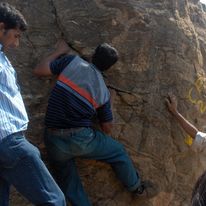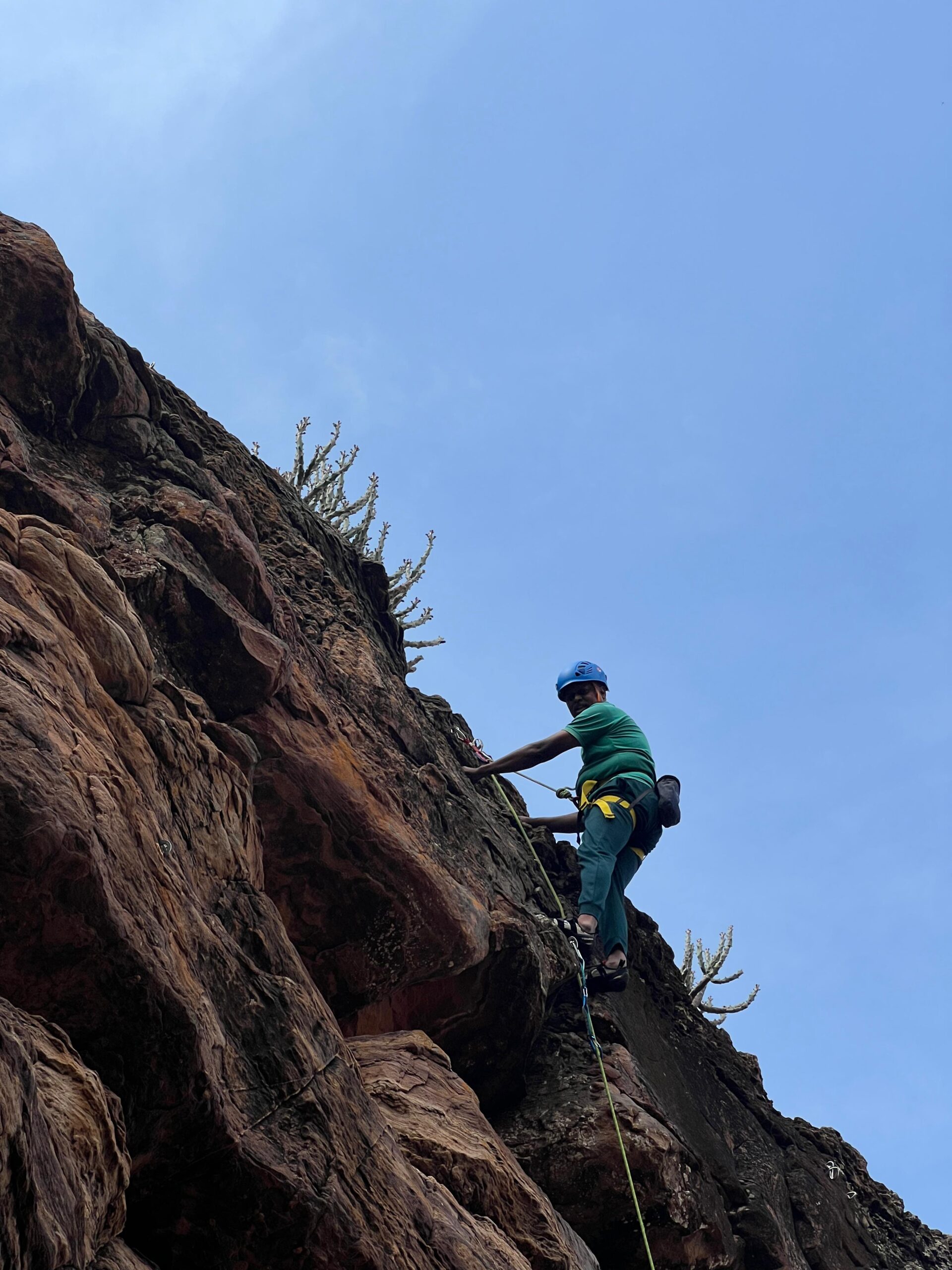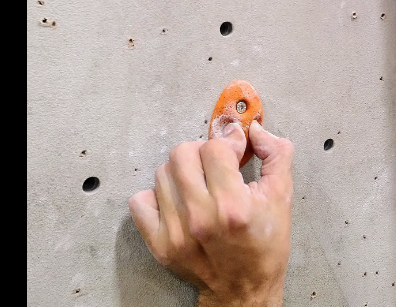Introduction to Rock Climbing in Bangalore
Famously known as the Silicon Valley of India, Bangalore has seen tremendous growth in recent decades. While the city is celebrated for its tech scene, shopping malls, and vibrant nightlife, it’s also a hub for adventure sports—rock climbing in Bangalore being one of the top activities for outdoor enthusiasts.
Whether you’re a seasoned climber or a beginner, rock climbing in Bangalore offers a thrilling experience that combines physical strength and mental agility. With a growing community of climbers, ample training opportunities, and several indoor and outdoor locations, Bangalore is quickly becoming one of the best destinations for climbing in Bangalore.
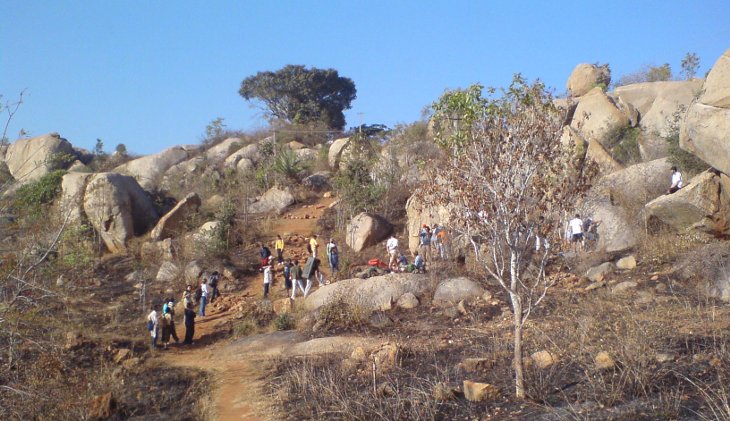
Best Spots for Rock Climbing in Bangalore
Outdoor Rock Climbing in Bangalore
For nature lovers, outdoor rock climbing in Bangalore is a must-try. The city and its surroundings boast stunning boulders and natural rock formations that are perfect for climbers of all levels. Some top locations include:
- Ramanagaram: Often referred to as the “Sholay” hills, this area is ideal for outdoor rock climbing enthusiasts looking for a challenge.
- Nandi Hills: Known for its picturesque views and varied climbing routes, Nandi Hills is a popular spot for those seeking a more serene climbing experience.
- Turahalli
- Located about 20 km from the heart of Bangalore, Turahalli is an expansive bouldering haven spread across 800 acres, often considered the city’s own open-air climbing gym. The area offers a variety of bouldering routes, surrounded by plenty of tree cover, making it an ideal spot for climbing enthusiasts.
- Access Details:
- Since 2018, the forest department has fenced off the area as part of a mini-state forest, and the gate is now locked. However, on weekends, if you arrive early when local walkers are heading out, the gate is typically open, and access should be trouble-free.
Indoor Rock Climbing in Bangalore
If you prefer an indoor environment, Bangalore has several facilities that offer indoor climbing in Bangalore. These climbing walls provide a controlled environment, perfect for beginners and those looking to improve their skills. Some of the best indoor climbing spots in the city include:
- Kanteerava Indoor Stadium: Known for its well-maintained climbing walls, it’s a great spot for those looking for structured training.
- Bouldering Gym Bangalore: Offers top-notch bouldering facilities, making it an excellent option for enthusiasts who enjoy this style of climbing.
Rock Climbing Training in Bangalore
Getting Started with Rock Climbing
For those new to the sport, rock climbing training in Bangalore is essential. Several training centers and gyms offer specialized climbing courses to help beginners get started. These training programs not only teach you the technical skills required but also ensure you understand the safety precautions necessary for climbing.
- Training Programs: Bangalore has several options for professional training, where instructors guide you through techniques, safety measures, and the fundamentals of climbing.
- Climbing Workshops: Participate in workshops where you can learn from experienced climbers and refine your skills.
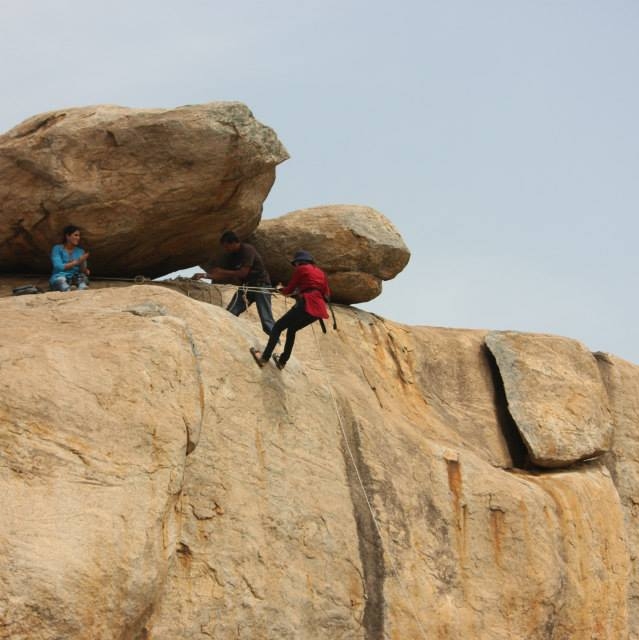
Climbing Gear and Equipment in Bangalore
One of the most common questions new climbers have is where to buy climbing gear in Bangalore. Thankfully, the city has multiple stores that provide high-quality climbing equipment, including shoes, harnesses, ropes, and chalk bags. Local climbing gyms can also help you get the gear you need.
Pricing for Rock Climbing in Bangalore
What Does Rock Climbing Cost in Bangalore?
The cost of rock climbing in Bangalore varies depending on the location and type of climbing. Indoor climbing gyms typically charge a day pass, which can range from ₹500 to ₹1000, depending on the facilities offered. Outdoor climbing trips may incur additional costs, such as transportation and guides.
- Indoor Climbing Prices: Generally, a day pass ranges from ₹500 to ₹1500.
- Outdoor Climbing Trips: Outdoor trips, including guides and equipment, might cost between ₹2000 to ₹4000.
Finding Rock Climbing Partners in Bangalore
Join the Rock Climbing Community
Building a network with fellow climbers is one of the most rewarding aspects of rock climbing. Whether you’re looking for climbing partners or just want to share your passion, rock climbing in Bangalore has a thriving community that hosts regular events and meet-ups. You can connect with like-minded individuals through social media groups or by attending climbing events at popular gyms.
Rock climbing in Bangalore is not just a physical activity; it’s an adventure that challenges your limits and connects you with a vibrant community. Whether you’re scaling boulders at Ramanagaram, honing your skills at the Kanteerava Indoor Stadium, or joining a training program, there’s something for everyone in this exciting city. So, gather your gear, find a partner, and get ready for an unforgettable rock climbing adventure in Bangalore!
Improving your climbing skills requires a combination of physical conditioning, mental focus, technique refinement, and consistent practice. Whether you’re a beginner or an experienced climber, here are some effective strategies to help you progress:
How to improve climbing
1. Strengthen Your Body
- Build Finger and Grip Strength: Your fingers are one of the most critical parts of your climbing. Incorporate exercises like dead hangs, fingerboard training, and pinch grips to improve finger strength.
- Core Strength: A strong core helps with body control, balance, and stability while climbing. Try exercises like planks, leg raises, and hollow holds.
- Pull-ups and Push-ups: These fundamental exercises build upper body strength, helping you pull yourself up on harder routes. Focus on controlled movements rather than just completing the reps.
- Leg and Lower Body Strength: Strong legs will help you push up with your feet and maintain better balance. Incorporate squats, lunges, and calf raises into your routine.
2. Refine Your Technique
- Footwork: Precision in foot placement is key. Focus on using your feet efficiently, keeping your heels low, and avoiding “kicking” holds. This reduces the load on your arms and makes climbing more efficient.
- Climbing Style: Practice different techniques such as mantles, flagging, and smearing. Each of these techniques helps improve your ability to move fluidly and more efficiently on the wall.
- Resting Techniques: Learn how to rest while climbing. Techniques like flagging, stemming, and drop knees allow you to take weight off your arms and use your legs more effectively.
3. Work on Mental Skills
- Focus on the Process: Climbing is as much mental as it is physical. Learning how to stay focused, calm, and confident is crucial. Visualization techniques, where you mentally rehearse the climb, can also improve performance.
- Overcome Fear: Fear is common, especially with heights or lead climbing. Practice climbing with controlled risks, using proper safety measures to gradually get comfortable with exposure.
- Problem Solving: Climbing is a puzzle. Learn to break down problems (routes) into manageable sections. Sometimes, the best strategy is to pause, breathe, and plan your next move instead of rushing through a climb.
4. Train Consistently
- Climbing Regularly: The more you climb, the better you’ll get. Regular practice allows you to gain more experience, identify your weaknesses, and focus on improvements. Try to climb at least 2-3 times a week if possible.
- Vary Your Routes: Climb different types of routes, such as slabs, overhangs, and vertical walls. This variety helps you develop different skills and improves your overall versatility.
- Bouldering and Sport Climbing: Both styles focus on different skill sets. Bouldering emphasizes power and explosive strength, while sport climbing (and trad climbing) works on endurance and technique. Incorporate both into your routine for well-rounded progress.
5. Get Professional Coaching
- Climbing Classes: If you’re serious about improvement, consider taking climbing lessons or hiring a coach. A coach can provide personalized feedback, point out areas for improvement, and guide your training plan.
- Climbing Workshops and Clinics: Attend climbing clinics that focus on specific skills, such as technique, endurance, or mental strength. These events can give you new insights and strategies for growth.
6. Cross-Train for Climbing
- Yoga and Flexibility: Yoga improves flexibility, balance, and body awareness—all of which are crucial for climbers. Incorporate regular stretching into your routine to increase flexibility, which will help with reach and efficiency.
- Cardio and Endurance: Building cardiovascular endurance helps you maintain energy throughout longer climbing sessions. Activities like running, cycling, or swimming can complement your climbing performance.
7. Track Progress and Set Goals
- Set Specific Goals: Setting clear, attainable goals helps you stay motivated. Whether it’s completing a specific route, increasing your endurance, or mastering a new technique, tracking progress keeps you focused.
- Document Your Climbs: Keeping a climbing journal where you track routes, difficulty levels, and notes on what went well or what could be improved helps you see your progress over time.
8. Rest and Recovery
- Rest Days: Overtraining can lead to injuries. Be sure to take rest days to allow your muscles to recover and to avoid burnout.
- Listen to Your Body: Pay attention to signs of fatigue or injury. If you’re feeling pain or discomfort, take a break and give yourself time to heal.
Summary
Improving your climbing is about balance: building strength, refining technique, training regularly, and enhancing mental toughness. By incorporating these strategies into your climbing routine, you’ll steadily improve your performance and reach new heights in the sport.
